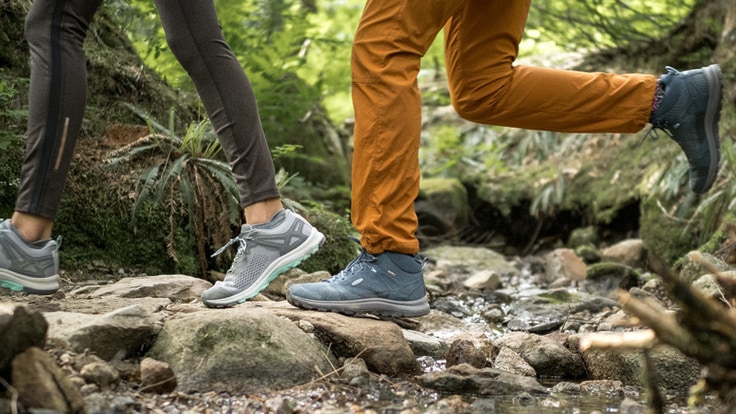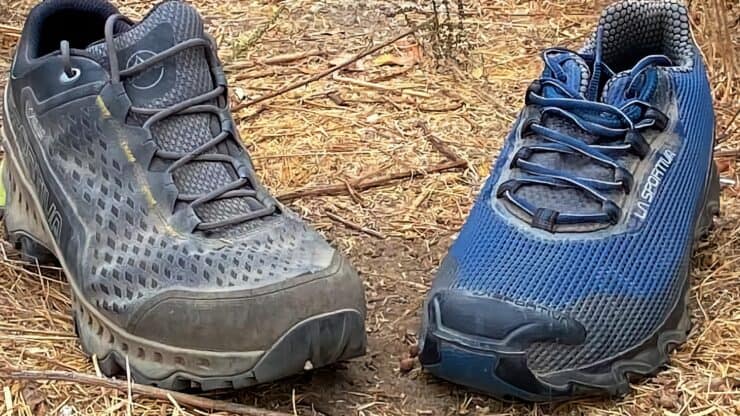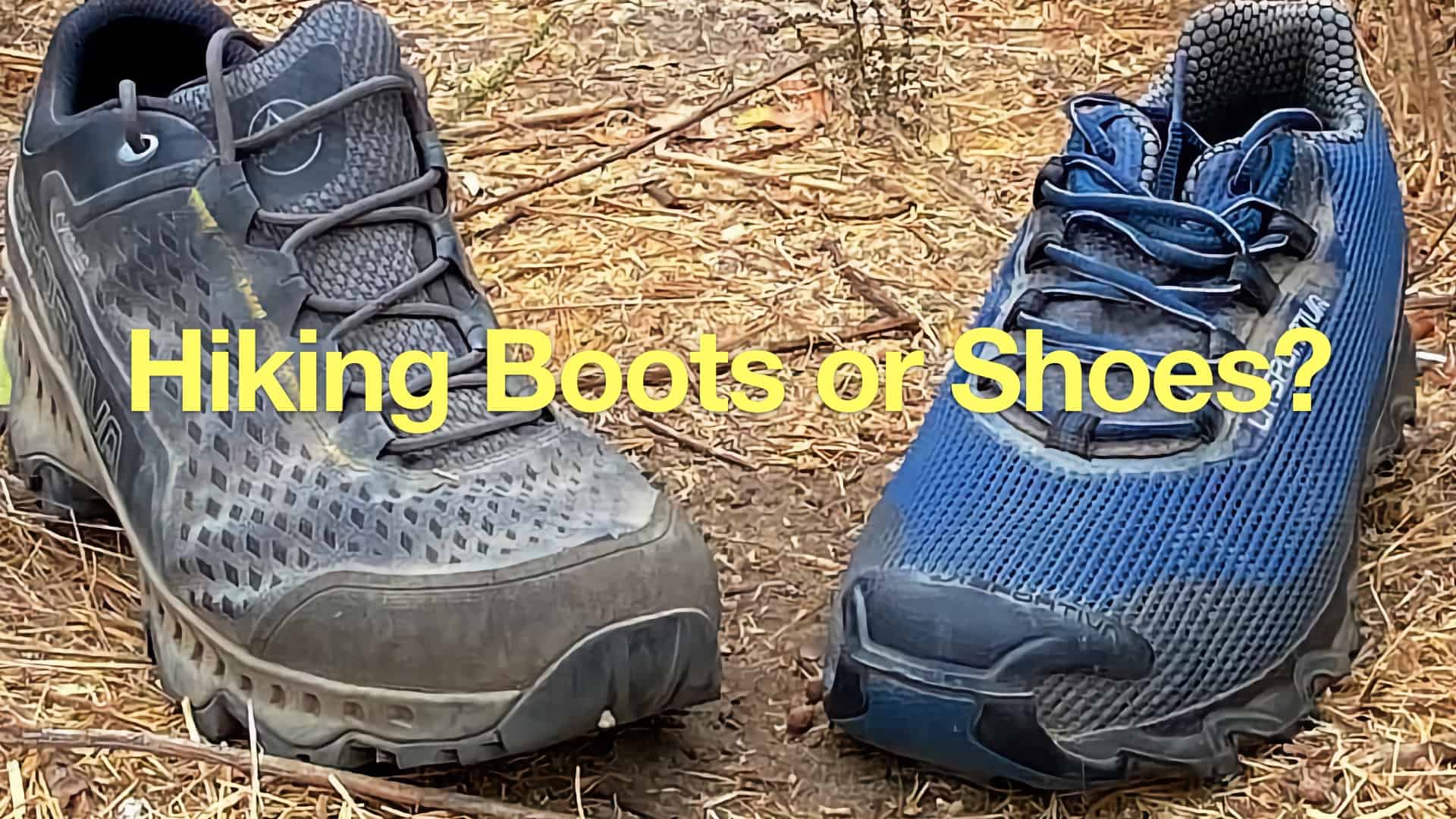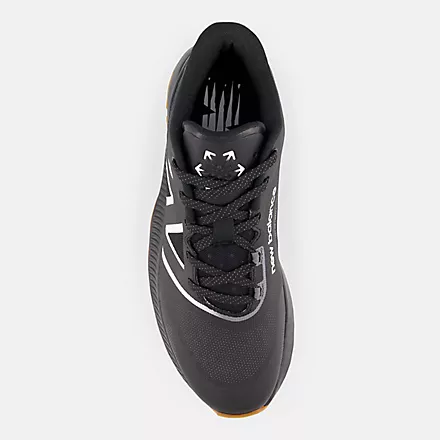Hiking boots provide ankle support and better protection from rough terrain, reducing the risk of injury. Additionally, they offer stiffer soles for improved stability and durability, making them essential for serious hikers.
Are you an outdoor enthusiast looking to elevate your hiking experience? Investing in a quality pair of hiking boots may be the key. Hiking boots are specifically designed to provide superior ankle support, preventing potential twists and sprains on uneven paths.
The sturdy construction and durable materials of hiking boots offer protection for your feet in rugged environments, ensuring a comfortable and safe journey. Whether you are tackling challenging trails or exploring the great outdoors, the benefits of hiking boots cannot be overstated. Let’s delve deeper into why hiking boots are a must-have gear for all your hiking adventures.

Credit: www.rei.com
Introduction To Hiking Boots
Hiking boots offer excellent ankle support, reducing the risk of twisting or spraining your ankle on uneven terrain. They provide more protection on the toe and heel, as well as better overall support, making them essential for outdoor enthusiasts.
Why Choose Hiking Boots?
Hiking is a great way to get exercise and enjoy the outdoors, but it can be tough on your feet. That’s where hiking boots come in. Hiking boots offer a number of benefits that can make your hiking experience more comfortable and enjoyable.
First and foremost, hiking boots are designed to protect your feet. They offer more support and stability than regular sneakers or tennis shoes, which can help prevent ankle sprains and other injuries. Hiking boots also have thicker soles that provide better traction and shock absorption, which can help reduce fatigue and foot pain.
Another advantage of hiking boots is that they are typically waterproof or water-resistant. This can be a lifesaver if you’re hiking in wet or muddy conditions, as it will keep your feet dry and comfortable. Additionally, hiking boots are often made with breathable materials that allow air to circulate around your feet, which can help prevent blisters and other foot problems.
Comparing Boots And Trail Runners
While hiking boots offer a number of benefits, they are not the only option for hikers. Many people prefer to hike in trail runners, which are lightweight, flexible shoes designed for running on trails. Trail runners offer some of the same benefits as hiking boots, such as good traction and support, but they are typically less durable and offer less protection.
The decision between hiking boots and trail runners ultimately comes down to personal preference. If you’re planning a long hike or hiking in rugged terrain, hiking boots may be the better choice. But if you prefer a lightweight, flexible shoe that allows you to move quickly and easily, trail runners may be a better option.
In conclusion, hiking boots offer a number of benefits for hikers, including better support, stability, and protection. But they are not the only option, and the decision between hiking boots and trail runners ultimately comes down to personal preference and the specific conditions of your hike.

Credit: exploringwild.com
Enhanced Ankle Support
Experience enhanced ankle support with hiking boots, reducing the risk of ankle injuries on rugged terrain. Benefit from added stability and protection while exploring the great outdoors.
Preventing Ankle Sprains
Enhanced ankle support provided by hiking boots helps prevent ankle sprains on rugged trails.
Stability On Uneven Terrain
Strong ankle support in hiking boots ensures stability and balance on uneven and rocky surfaces.
Superior Protection
Hiking boots offer superior protection for your feet and ankles, ensuring a safe and comfortable hiking experience. The following H3 headings highlight the specific areas where hiking boots provide exceptional protection.
Toe And Heel Safety
One of the key benefits of hiking boots is the enhanced protection they offer for your toes and heels. The sturdy construction and reinforced toe caps provide impact resistance against rocks, roots, and other trail hazards. Additionally, the heel support in hiking boots reduces the risk of twisting or injuring your ankle on uneven terrain.
Protection From The Elements
Hiking boots are designed to shield your feet from the elements, such as rain, snow, and mud. The waterproof membranes and durable materials ensure that your feet stay dry and comfortable in various weather conditions. Moreover, the grip soles offer traction on slippery surfaces, further enhancing your safety during hikes.
Improved Traction And Grip
When it comes to hiking, having proper traction and grip is essential for a safe and enjoyable outdoor experience. Hiking boots offer numerous benefits, with one of the most significant being their ability to provide improved traction and grip across various terrains.
Handling Slippery Surfaces
Hiking boots are designed with specialized outsoles that feature deep lugs and aggressive tread patterns, which enhance their ability to grip onto slippery surfaces such as wet rocks, muddy trails, and loose gravel. This feature provides hikers with stability and confidence when navigating challenging and unpredictable terrain.
Versatility Across Different Terrains
One of the key advantages of hiking boots is their versatility across different terrains. Whether you are hiking through rugged mountain paths, traversing through dense forests, or crossing streams, hiking boots offer the traction and grip needed to maintain stability and control. The durable construction and advanced traction systems of hiking boots ensure that hikers can confidently tackle a wide range of landscapes.
Durability Of Hiking Boots
When it comes to hiking, having durable footwear is crucial for a safe and enjoyable outdoor experience. Hiking boots are specially designed to withstand the rigors of varied terrains, making them a reliable choice for outdoor enthusiasts. Let’s explore the durability of hiking boots and the benefits they offer.
Materials And Construction
Hiking boots are constructed using high-quality materials such as full-grain leather, nubuck leather, synthetic fabrics, and waterproof membranes like Gore-Tex. These materials are chosen for their durability, providing resistance to abrasions, tears, and water penetration. The construction of hiking boots often includes reinforced stitching, protective toe caps, and sturdy outsoles, all contributing to their longevity.
Longevity Of Footwear
Due to their robust construction and high-quality materials, hiking boots are known for their exceptional longevity. When properly cared for, they can endure extensive use across diverse terrains, offering reliable performance over an extended period. This longevity makes hiking boots a cost-effective investment for outdoor enthusiasts, providing sustained protection and support for the feet.
Comfort And Fit
When it comes to hiking, comfort and fit are crucial factors to consider when selecting the right hiking boots. The comfort and fit of your hiking boots can significantly impact your overall hiking experience, affecting your performance, endurance, and safety on the trails.
Importance Of Proper Fit
A proper fit is essential for hiking boots as it ensures that your feet are well-supported and protected throughout your outdoor adventures. Ill-fitting boots can lead to discomfort, blisters, and even injuries, hindering your ability to enjoy your hike to the fullest. It’s important to prioritize finding hiking boots that provide a snug yet comfortable fit, with ample room for your toes and proper ankle support.
Features Enhancing Comfort
Modern hiking boots are designed with a range of features aimed at enhancing comfort during long treks. From cushioned insoles and padded collars to moisture-wicking linings and breathable materials, these features contribute to a more pleasant hiking experience by minimizing fatigue and preventing foot-related issues.
Additionally, many hiking boots come with adjustable lacing systems that allow for a personalized fit, ensuring that your boots feel secure and comfortable throughout your hike.
Weather And Water Resistance
One of the key benefits of hiking boots is their ability to withstand various weather conditions and provide excellent water resistance. Whether you are hiking in rainy, snowy, or muddy environments, having the right pair of hiking boots can make all the difference in keeping your feet dry and comfortable throughout your outdoor adventures.
Waterproofing Technologies
Many hiking boots feature advanced waterproofing technologies such as Gore-Tex or eVent membranes. These technologies create a barrier that prevents water from seeping into the boots while still allowing moisture to escape, keeping your feet dry from both external elements and sweat.
Boots For Various Weather Conditions
Hiking boots are designed to cater to different weather conditions, offering insulation for cold climates and breathability for hot weather. Some boots come with Thinsulate insulation to keep your feet warm in freezing temperatures, while others have mesh panels for ventilation during summer hikes.
Considerations For Different Hiking Scenarios
For different hiking scenarios, the benefits of hiking boots include superior ankle support to prevent injuries and stiffer midsoles for enhanced stability on rugged terrain. Hiking boots offer durability and protection, making them ideal for long-distance hikes in varying conditions.
Short Hikes Vs. Long Treks
When it comes to hiking, the duration of your trip can significantly affect the type of footwear you should wear. For short hikes, you might be able to get away with wearing comfortable sneakers or trail shoes. However, for longer treks, hiking boots are a must-have.
Hiking boots provide excellent ankle support, which can help reduce the risk of twisting or spraining your ankle on uneven terrain. Additionally, they offer better protection and durability, ensuring your feet stay protected and comfortable for the entire trip.
Mountainous Vs. Flat Terrain
The terrain you plan to hike on is another crucial factor to consider when choosing hiking boots. If you’re hiking on flat terrain, you might not need the same level of ankle support as you would on mountainous terrain. In this case, trail shoes or sneakers might be sufficient. However, if you plan to hike in mountainous terrain, sturdy hiking boots are essential.
They offer better traction, stability, and ankle support, which can help prevent injuries and ensure a safer and more comfortable hiking experience.
In conclusion, when choosing hiking boots, it’s crucial to consider the duration of your trip and the terrain you plan to hike on. Investing in a good pair of hiking boots can provide numerous benefits, including better protection, durability, ankle support, and stability. So, if you’re planning your next hiking trip, make sure to consider these factors and choose the right pair of hiking boots that suit your needs.
Choosing The Right Hiking Boots
Hiking boots provide excellent ankle support, reducing the risk of twisting or spraining your ankle on uneven terrain. They also offer better protection for your toes and heels, as well as improved overall support, making them essential for a comfortable and safe hiking experience.
Factors To Consider
When choosing the right hiking boots, consider the type of terrain you will be hiking on, your hiking style, and the level of ankle support you need.
Recommended Brands And Models
Some popular brands and models for hiking boots include Merrell Moab 2, Salomon X Ultra 3 Mid GTX, and Keen Targhee III. Merrell Moab 2 – Great for day hikes – Offers excellent comfort and traction Salomon X Ultra 3 Mid GTX – Ideal for long-distance hiking – Provides waterproof protection Keen Targhee III – Suitable for varied terrain – Known for durability and toe protection When selecting hiking boots, prioritize comfort, durability, and proper fit to enhance your hiking experience.

Credit: hikingguy.com
Frequently Asked Questions
Do Hiking Boots Make A Difference?
Yes, hiking boots make a difference by providing ankle support, preventing sprains, and offering better durability and protection.
What Is The Point Of Hiking Boots?
Hiking boots provide better ankle coverage and stiffer midsoles for support, reducing the risk of ankle sprains and injuries. Regular sneakers or tennis shoes are not suitable for hiking as they lack the required support. Hiking boots also offer protection from mud, snow, and water, making them versatile for multiple uses.
Why Wear Hiking Boots Instead Of Sneakers?
Hiking boots provide better ankle support and protection on rugged terrain compared to sneakers.
Is It Ok To Wear Hiking Boots Everyday?
Yes, it’s okay to wear hiking boots every day. They provide good support and protection.
Conclusion
Investing in a pair of hiking boots offers numerous benefits. From providing ankle support to offering protection from the elements, hiking boots are essential for a safe and comfortable outdoor experience. The durability and traction they provide make them a valuable asset for any hiker.











